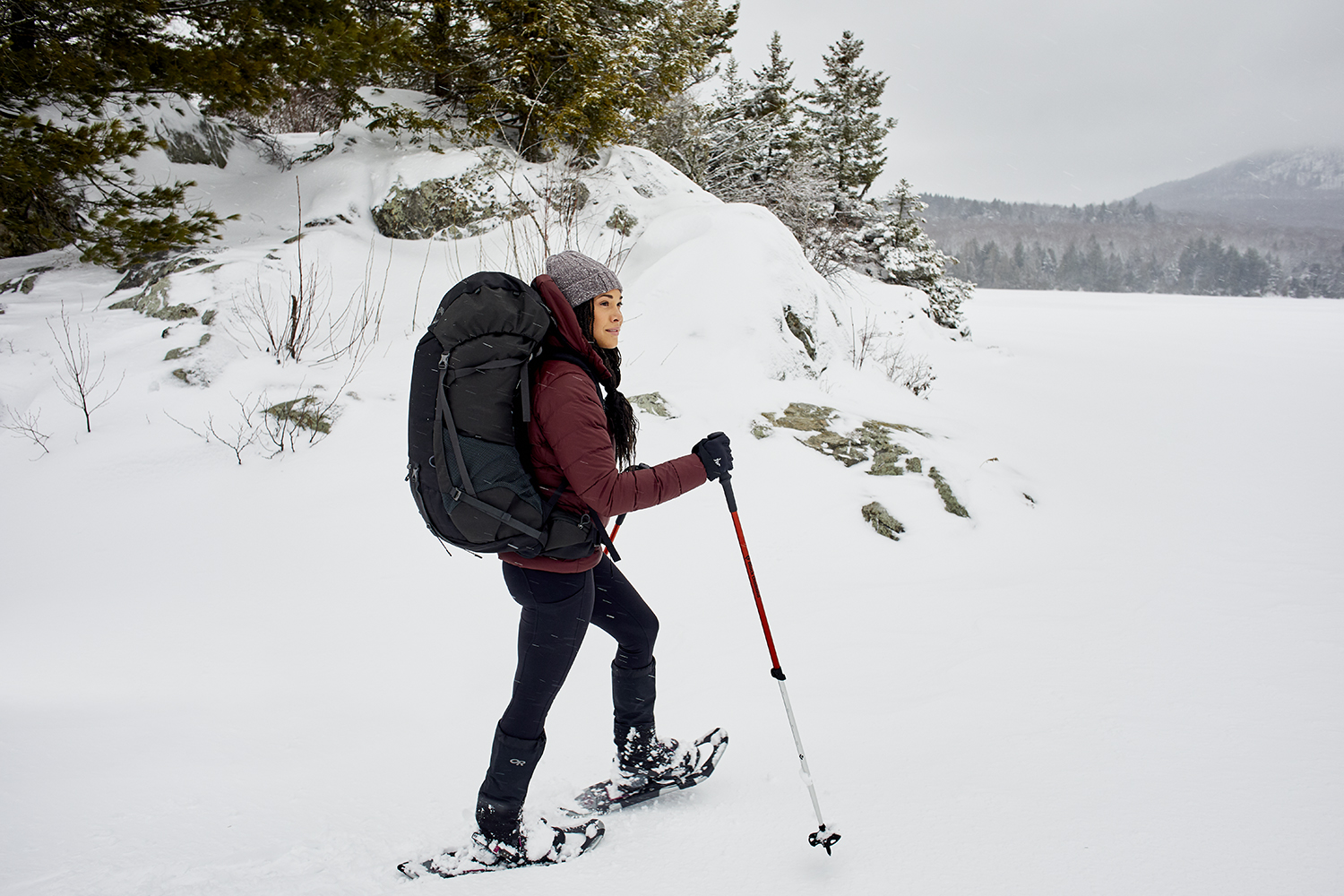How to prevent and treat foot blisters
Outdoor Activities | March 28, 2024
SAIL
November 26, 2019

Is your departure date fast approaching and you’re worried about not being able to fit everything in your bag?
It’s tempting, but you can’t bring everything on a trip. How can you decide what you really need? It’s simple. A place to sleep, which means a tent, mattress and sleeping bag when you’re camping, food and drink, which includes tools to cook on the fire or simply a bottle opener and freeze-dried food, a water reservoir and snacks, life-saving items (a first aid kit, a flashlight, credit cards (yes!), toiletries (soap, a towel, toothbrush and toothpaste), ID (passport or identity cards), entertainment (books, a cellphone and headphones, etc.) and clothes. The last category is the one that leads to overpacking.
When it comes to clothes, when you have to carry a backpack, we recommend that you restrict yourself to versatile, comfortable and practical pieces and limit yourself to one or two of each type of clothing. For example, for a one-week stay you could pack a waterproof coat, a down jacket, two Merino wool sweaters, a jacket or shirt, a camisole, two t-shirts, a dress for nights out, shorts, leggings and light jeans. The same rule applies when it comes to underwear. Choose versatile, comfortable and practical pieces. However, you should pack extra pairs of socks, especially if you intend to walk and hike a lot.
If you are travelling solo, make a list of all the tools, food and accessories you can’t afford to forget and check off each item as you pack it.
Once the planning is done, it’s time to start packing! Start by placing items that are relatively light and you will only have to use once you arrive at the campsite at the bottom of the centre pocket: camping equipment, flashlight, pillow, etc. Try to build up a base that’s both uniform and compact. Compression bags can help you achieve this. You’ll be amazed at how small you can make your sleeping bag! Set aside any bulky items for the third step.
Now that your base has been built, it’s time to add the heavy items: travel guide, billy can, heater, etc. This packing method ensures that the weight of your bag aligns with your middle back, where your centre of gravity is. This will prevent you from losing your balance or suffering from muscle pain at the end of a long day.
Once the heaviest items have been packed, you can add bulky objects to the top of the central pocket. This includes your water filter and light items such as clothes and underwear.
At this stage, the main pocket is full, but you probably still have a few items to pack. No need to panic! Securely attach large items such as boots and your tent to the sides or bottom of your backpack using the adjustable straps. Once more, ensure that you distribute the weight by checking that one side is not significantly heavier than the other and by having a travel companion carry some of your equipment, if necessary.
If you are shipping your bag using a carrier (plane, train, bus or boat) who will send it in a trunk or on a roof along with other luggage, it is advisable to either not attach anything to your bag or to attach it securely using several layers of strong tape, for example.
Do you have small items or essentials left to pack? Take a good look at your backpack. In addition to the main pocket, there are several other pockets at different strategic locations for very specific objects: water bottle, cellphone, pocket knife, etc. Take advantage of every last inch of your backpack by using the pockets to store anything you might need to access often or quickly during your adventure: wallet, light raincoat, down jacket, scarf, hat, cap, trail map, snacks, etc.
If you use a water reservoir with a straw, don’t forget to fill it and slot it into the long pocket that lines the inside of your bag before removing the tube. There is often a hole designed specifically for this purpose. You can skip this step if you will need the tube at a later stage or if or you are flying, for example.
Obviously, the best way to perfect filling your backpack and saving space is to test it yourself. Everybody, trip and backpack is different, so we suggest using our tips as a guide and trying several combinations before you set out on your trip. After packing your bag, walk about with it on your back and try to spot an imbalance or a specific item that is problematic. After using your backpack a few times, you will know what you really need for a pleasant trip. In the meantime, don’t hesitate to visit an outdoor equipment store and ask an expert for advice and take the time to compare the different backpack models available. You can find one that suits your body and your expectations, whether you want to be better equipped or to equip yourself for your first adventure.
Expedition backpacks Hiking backpacks Day backpacks